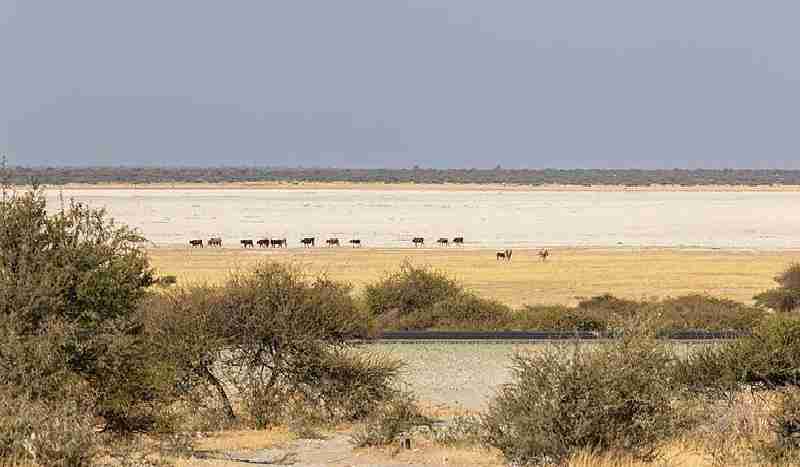Once upon a time … there was a great lake. It was called Makgadikgadi Lake and its water retained the mineral salts of the rocks of its bed. Also the water carried by rains and rivers brought a certain amount of rocks’ salt. When, about 10,000 years ago, the sudden rising temperature turned those plains into a desert, the lake disappeared. Only salt remained and still remains to remind humans of that ancient lake.
Today, this salt is protected by the government of Botswana as Makgadikgadi Pans National Park. It consists of two large pans and many smaller ones. Sometimes the region is flooded by the river Nata, as soon as the rain season swells its flow. When the water withdraws then, the saline process begins all over again.
Nature of Makgadikgadi Pans
The Makgadikgadi Pans National Park is not a green area, of course. But there is vegetation. It consists of layers of algae, during the rain season, and very short grass typical of dry places in the remaining months. As long as you leave the salty soils you can find prairies, palm trees, big baobab trees and acacias. You can still admire the famous Baines’ Baobabs, which were painted by British artist Thomas Baines in the 19th century and are still there.
The most important salt pans are Sua Pan (4,921 sq km) and Nwetwe Pan. Then there are the smaller Nxai Pans which are also included in another protected reserve. Sua Pan is a seasonal lake, welcoming floods every year during rain season and getting dry during the remaining months. Nwetwe has been hiding archaeological ruins for a long time. It was one of the first salty lakes described by explorer Livingstone.

Wildlife at Makgadikgadi
In the dry, salty areas only ostriches have found their perfect habitat during the whole year. Around the salt pans and in the prairie you can meet reptiles, turtles, many lizards and a special one that only lives in this region (Spiny Agama). Birds come and go all the time in the National Park. You can see flamingos, that stop here during their migration, and an endemic kind of flamingo is the greater – as for size – in southern Africa!
The wide plains of this dry area are also home to zebras and wildebeests. They often run across the prairie or drink at the water ponds or rest under big baobab trees. Where you find zebras and wildebeests you also find animals that chase them, such as lions. Makgadikgadi is a good place for safari. You will admire animals but also incredible landscapes and colours. The experience of a safari at Makgadikgadi shall not be missed.
Tourist information about Makgadikgadi
What to do: at Makgadikgadi you can go safari, of course, mainly by jeep car. Make sure you always go with a local guide. You can also ride quad-bikes, go birdwatching or explore the salty pans on foot. You can stay inside the National Park thanks to the Makgadikgadi lodges that also have a local airstrip where small airplanes can land.
How to get there: you get there by airplane, either landing at Makgadikgadi Airstrips or at Maun or Kasane airports, then taking a local connection by bus or jeep to the Park.



